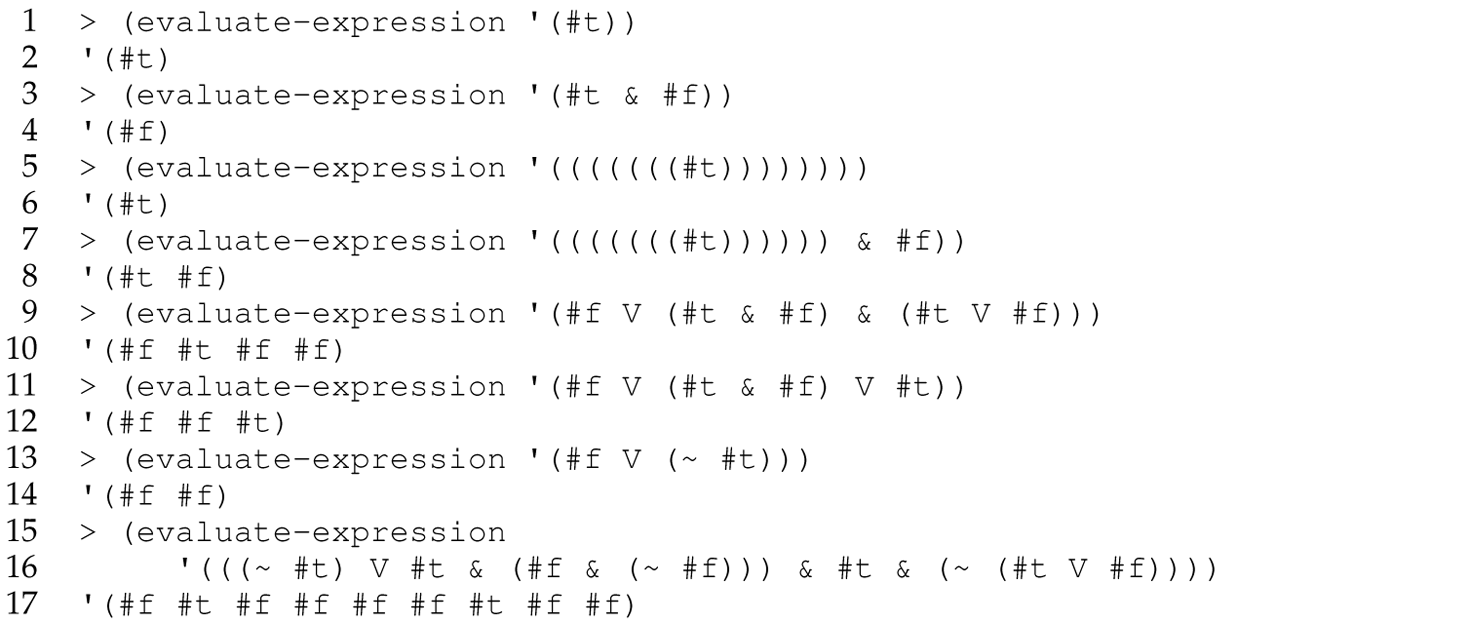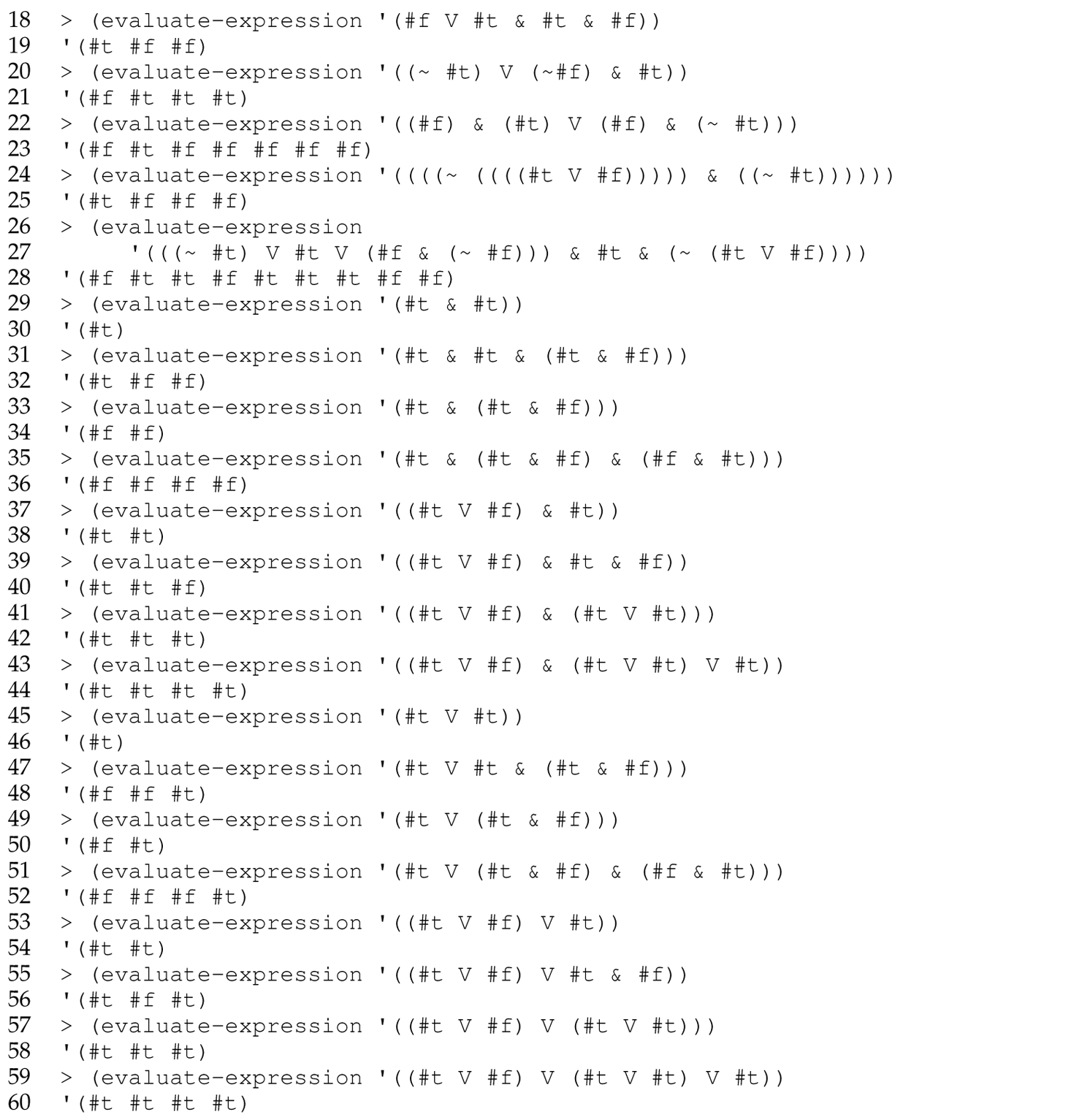5.14 Programming Project for Chapter 5
Define a function evaluate-expression that accepts only a list argument, which represents a logical expression; applies the logical operators in the input expression; and returns a list of all intermediate results, including the final return value of the expression, which can be either #t or #f.
The expressions are represented as a parenthesized combination of #t (representing true), #f (representing false), ∼ (representing not), V (representing or), and & (representing and). In the absence of parentheses, normal precedence rules hold: ∼ has the highest precedence, & has the second highest, and V has the lowest. Assume left-to-right associativity. For instance, the expression  is equivalent to
is equivalent to  . No two operators can appear in succession and the ~ will always be enclosed in parentheses. All input expressions will be valid.
. No two operators can appear in succession and the ~ will always be enclosed in parentheses. All input expressions will be valid.
Examples:


You may define one or more helper functions. Keep your program to approximately 120 lines of code. Use of the pattern-matching facility in Racket will significantly reduce the size of the evaluator to approximately 30 lines of code. See https://docs.racket-lang.org/guide/match.html for the details of pattern matching in Racket. (Try building a graphical user interface for this expression evaluator in Racket; see https://docs.racket-lang.org/gui/.)
